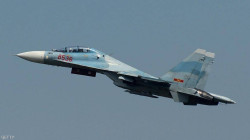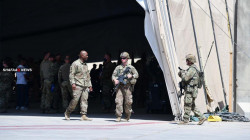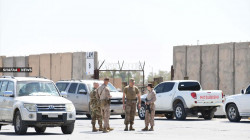Iraq Could Replace its Collapsing F-16 Fleet with Russian Fighter Jets

Shafaq News/ Iraq today fields only a single class of fighter aircraft, a squadron of 34 F-16IQ Fighting Falcon lightweight fighters acquired from the United States, which are fielded alongside 24 South Korean T-50 very light trainers and an unknown number of Russian Su-25 attack jets - some of which were delivered second hand from Iran.
The F-16s depend heavily on support from American technicians to operate, although these personnel are expected to withdraw from Iraq in the near future due to changing political circumstances in the country.
Lockheed Martin’s vice president for communications, Joseph LaMarca Jr., was quoted by the New York Times as stating regarding a possible withdrawal: “In coordination with the U.S. government and with employee safety as our top priority… Lockheed Martin is relocating our Iraq-based F-16 team.” With the possibility of its F-16s being grounded, the potential for Iraq to look to acquire foreign fighters from sources which will not depend on American support remains a significant possibility.
F-16IQ fighters were delivered to Iraq between 2014 and 2017, with American political pressure thought to have played a very significant role in influencing the post-occupation government in Baghdad to purchase the aircraft despite their questionable capabilities.
It is no exaggeration to say that the aircraft represents the least capable F-16 variant in service anywhere in the world - with the possible exceptions of those in Egyptian service and the small F-16A fleet in the Venezuelan Air Force.
The fighters are the only modern F-16 variants which are not equipped with AIM-120 air to air missiles, and instead rely on the antiquated Cold War era AIM-7 Sparrow and AIM-9L/M missiles both of which are considered obsolete.
The decision to limit the aircraft to such a load out is thought to have been influenced by Israeli concerns, resulting in Iraq only being provided with the minimum capability sufficient to engage ground targets. The country’s airspace has been violated by Israeli fighter aircraft in the past - both to attack Syrian targets through Iraq and to strike non-state actors on Iraqi soil.
The MiG-29 will provide a significantly superior air to air capability than the F-16IQ, with all MIG-29 operators in the Arab world deploying them with R-77 active radar guided missiles — an equivalent to the AIM-120C denied to the Iraqi Air Force.
Iraq previously deployed much older MiG-29As from 1988, which had some successes against Western aircraft in the few incidents of air to air combat they saw when equipped with much older and now obsolete R-27 and R-60 missiles. The much more advanced MiG-29M was recently ordered by both Algeria and Egypt, and is both easier to operate and maintain and much more capable in all roles than the MiG-29A which Iraq previously deployed.
The primary threat to U.S. personnel in Iraq has come from “militia” forces, many of which are aligned with Iran, which are hostile to the United States.
Russian personnel are not expected to face any similar kind of harassment or threat. Purchasing Russian fighters to replace the F-16s would be far from unprecedented, with the Iraqi Army having previously acquired Russian T-90 tanks to replace American M1 Abrams tanks in its elite units. Russian fighters could provide an effective complement to a growing number of Russian weapons systems deployed by the Iraqi Military, which includes, among other assets, new attack helicopters and possibly long range air defence systems in future.
Source: militarywatchmagazine.com





